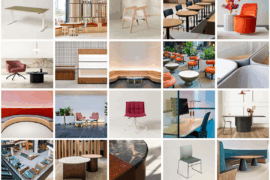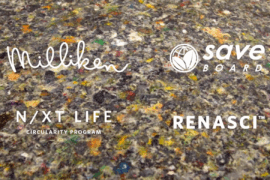An ambitious land reclamation project is underway in Jakarta, modeled after key metropolitan cities in Asia.

March 31st, 2015
Land scarcity has become a growing concern in the greater metropolitan area of Jakarta, Indonesia given the city’s rapid rate of urbanisation and huge population growth.
Designed by Skidmore Owings & Merrill, Pluit City is a 450-hectare master plan that looks to tackle this issue. It’s situated on two new islands created on reclaimed land off the north coast of Jakarta – the first in a series of new land that will make up a unique ‘archipelago’ city district in the historic Jakarta Bay.
Modeled after cities like Singapore, Hong Kong and Dubai, Pluit City will have commercial and residential areas, and numerous public facilities such as schools, hospitals, places of worship, museums and more, with convenient connections to Jakarta’s central business district and international airport.
Aside from serving as an ‘affordable solution’ to Jakarta’s swiftly swelling population, the islands will also deliver sea defense to protect the city from rising sea levels and severe storm surges which threaten millions of Jakarta residents.
With great consideration for design on a human scale, the intensity of high-density development will be mitigated by low-rise edges and pedestrian-scaled streets. Tree-lined boulevards will integrate bus lanes, bikes lanes and shaded pedestrian arcades, while major thoroughfares for traffic will be managed to maximise pedestrian crossings and street life activity.
The plan also calls for the creation of a corridor for public uses and community spaces in the heart of the higher density mixed-use districts. As an example, schools, community centres, local shops and convenience stores will frame a linear garden space that residents can enjoy.
Designed as ‘green islands’, the plan for Pluit City sets out clear principles for incorporating indigenous landscape materials. Mixed-use districts will also be linked to residential neighbourhoods via a network of green open spaces and public plazas, leading pedestrians by foot from the heart of the island development to the waterfront edges.
The issue of sustainability is also well addressed within the project where the city framework strategy employs a passive design approach with deep consideration for local wind patterns and solar exposure. Importantly, 80 per cent of the future community’s portable water needs will be provided for by capturing and recycling rainwater on site.
When completed, Pluit City will be able to accommodate some 40,000 to 50,000 residents.
Skidmore Owings & Merrill
som.com
INDESIGN is on instagram
Follow @indesignlive
A searchable and comprehensive guide for specifying leading products and their suppliers
Keep up to date with the latest and greatest from our industry BFF's!

It’s widely accepted that nature – the original, most accomplished design blueprint – cannot be improved upon. But the exclusive Crypton Leather range proves that it can undoubtedly be enhanced, augmented and extended, signalling a new era of limitless organic materiality.

Gaggenau’s understated appliance fuses a carefully calibrated aesthetic of deliberate subtraction with an intuitive dynamism of culinary fluidity, unveiling a delightfully unrestricted spectrum of high-performing creativity.
The internet never sleeps! Here's the stuff you might have missed

With a bold, singular vision and a new factory just around the corner from their Western Sydney manufacturing heartland, Maxton Fox’s evolution takes the best of its history while setting its eyes on the future – and keeping its feet firmly planted on Australian soil.

Developed by Milliken in partnership with saveBOARD, Renasci™ is a breakthrough circular flooring product made from carpet and soft plastics waste – designed to be repeatedly recycled.